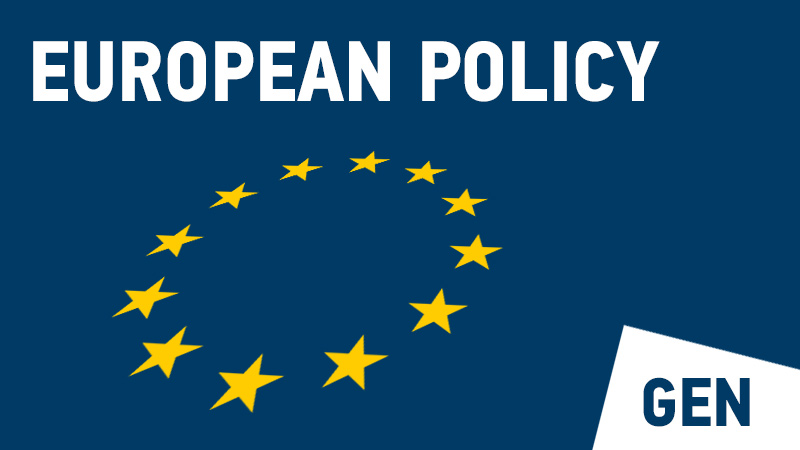GEN - 973.00. Publication of all three revised directives in the Official Journal is scheduled on 21 December. The 2030 targets set out in the revised Energy Efficiency Directive are 32,5%. The revised Renewable Energy Sources Directive has a binding collective target of 32% of energy that shall come from renewable energy sources.
Energy Efficiency Directive
The revision of energy efficiency directive 2012/27/EU establishes a framework of measures whose main objective is to ensure that the EU's 2020 and 2030 targets are met. Increasing energy efficiency will benefit the environment, reduce greenhouse gas emissions, improve energy security, cut energy costs for households and companies, help alleviate energy poverty and contribute to growth and jobs.
The main elements of the revised directive include:
- EU headline targets on energy efficiency of at least 32,5% by 2030.
- An obligation to achieve energy savings each year between 2021 and 2030 of 0.8% (0,24% in the case of Cyprus and Malta) of annual final energy consumption as well as flexibility for the Member States on how to fulfil this obligation.
- Social provisions requiring Member States to consider the need to alleviate energy poverty when designing policy measures aimed at achieving energy savings.
- Revised Directive on Energy Efficiency: http://data.consilium.europa.eu/doc/document/PE-54-2018-INIT/en/pdf
Renewable energy directive
The revision of the renewable energy directive 2009/28/EC will accelerate Europe's transition towards clean energy by building on a variety of renewable sources such as wind, solar, hydro, tidal, geothermal, biomass and biofuels.
It sets a binding Union target for the overall share of 32% energy from renewable sources at EU level for 2030. Member States shall collectively ensure that the 32% target is reached. Member States shall set national contributions to meet, collectively, the binding overall.
It also lays down rules on financial support for electricity from renewable sources, on self-consumption of such electricity, on the use of energy from renewable sources in the heating and cooling sector.
Further key elements of the revised renewable energy directive include:
- The roll-out of renewable electricity production will be stepped up through market-oriented support schemes, reduced permit granting procedures and one-stop-shop methods
- Households that wish to produce their own renewable energy, for instance via rooftop solar panels, will be supported by being exempted to a large extent from charges or fees for their self-produced energy consumption
- The Primary Energy Factor (PEF) is lowered from 2,5 to 2,1.Of note is that for savings in kWh electricity Member States may apply a default coefficient of 2.1 or use the discretion to define a different coefficient provided they can justify it.
- Note on PEF: the present understanding is that the PEF of 2,1 would apply when new revisions of Ecodesign and Energy Labelling measures start. The new PEF would not be used in ongoing revisions.
- The annex I maintains the previous national overall targets for the share of energy from renewable sources in gross final consumption of energy in 2020. From 1 January 2021, the share of energy from renewable sources shall not be lower than the 2020 baseline.
- The other annexes deal in detail how renewable energies must be considered. A first impression is that the complexity of the calculation premises to demonstrate the compliance with the targets has increased.
- Revised Directive on Renewable Energy: http://data.consilium.europa.eu/doc/document/PE-48-2018-INIT/en/pdf
Governance regulation
The governance regulation defines how member states will cooperate both with each other and with the European Commission to reach the ambitious objectives of the Energy Union, including notably the renewable energy targets and the energy efficiency targets, as well as the EU's long-term greenhouse gas emissions goals. It also sets out control mechanisms that will help ensure that the targets are met, and that the range of actions proposed constitute a coherent and coordinated approach.
- Governance Regulation: http://data.consilium.europa.eu/doc/document/PE-55-2018-INIT/en/pdf
Recommended Actions
The number of pages of the revised directives and the regulation has increased significantly. The practical consequences for the various sectors within the HVACR industry cannot easily be identified. An initial first reading can be recommended to associations and manufacturers.
Related documents and links
All related documents and articles can be found in the respective sections in the right sidebar.
- Energy Efficiency webpage: https://ec.europa.eu/energy/en/topics/energy-efficiency/energy-efficiency-directive
- Renewable Energy webpage: https://ec.europa.eu/energy/en/topics/renewable-energy/renewable-energy-directive
- Energy governance webpage: https://ec.europa.eu/energy/en/topics/energy-strategy-and-energy-union/governance-energy-union
- Compromise EED: http://data.consilium.europa.eu/doc/document/ST-10309-2018-INIT/en/pdf
- Compromise RES: http://data.consilium.europa.eu/doc/document/ST-10309-2018-INIT/en/pdf
- Compromise governance energy union: http://data.consilium.europa.eu/doc/document/ST-10307-2018-ADD-1/en/pdf
- EED Commission website: https://ec.europa.eu/energy/en/topics/energy-efficiency/energy-efficiency-directive
- RES Commission website: https://ec.europa.eu/energy/en/topics/renewable-energy/renewable-energy-directive
